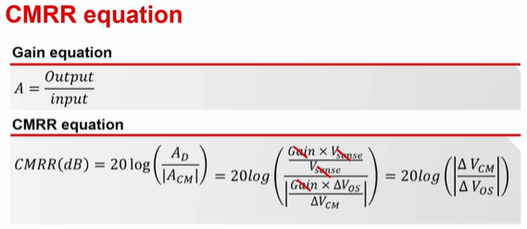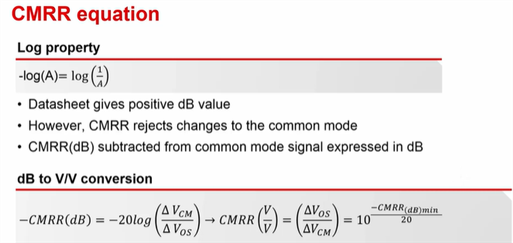Tool/software:
I have not able to find any methods of calculating CMRR for current-sense amplifiers online, so please tell me if my way is incorrect.
To my understanding, a current-sense amplifier operates measures the voltage drop across a shunt resistor between the two input terminals, like so.
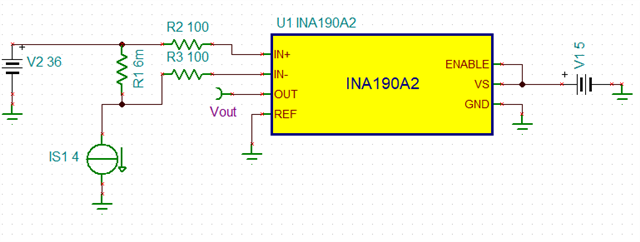
Also to my understanding, CMRR is defined as (Differential gain/Common-mode gain) and measured with the amplifier terminals connected to a common-mode voltage. As you can see, the shunt resistor is bypassed.
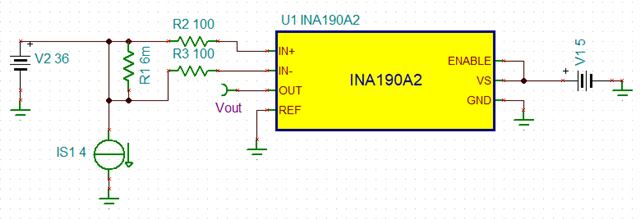
DC transfer characteristics for IS1 = 0 to 4A
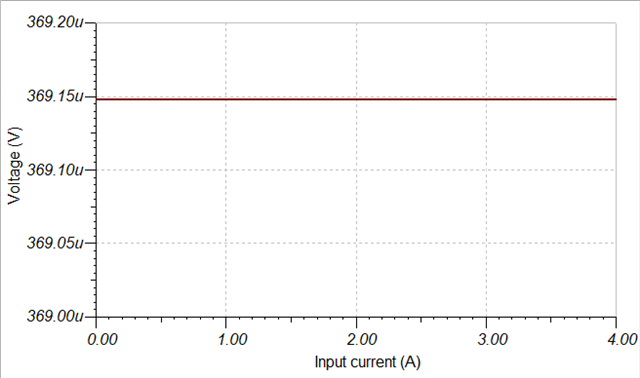
V_CM = VIN/2 = 36/2 = 18V
A_CM = VOUT/VCM = 369.15u/18 = 20.51u
CMRR = 20log(A_d/A_CM) = 20log(50/20.51u) = 127.74 dB
which is rather close to the minimum CMRR of 132 dB specified for INA190.


